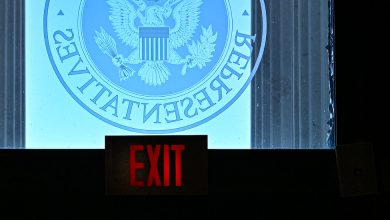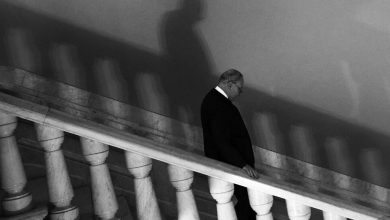Ketanji Brown Jackson Has Her Work Cut Out for Her

The confirmation of Ketanji Brown Jackson to the Supreme Court on Thursday was as noteworthy for what it didn’t change as for what it did.
Upon taking office, she will become the first Black woman to join the Court in its 233-year history. At the same time, her arrival will not tip the ideological balance of the court or move it off its current trajectory as a vehicle for the conservative movement.
The soon-to-be Justice Jackson may be able to persuade her new colleagues not to move too aggressively, but there’s nothing that she or the other liberals on the court (or Chief Justice John Roberts, for that matter) can do to restrain a hard-right conservative majority that seeks to unravel what’s left of postwar jurisprudence.
On this point, we got another glimpse of what this world will look like when, on Wednesday, the Supreme Court issued a 5-4 “shadow docket” order reviving a Trump administration regulation that limited the ability of states and sovereign tribes to restrict projects that might damage waterways or reduce water quality. The conservative majority (minus Roberts) did not write an opinion or otherwise explain its decision. Nonetheless, it undermined the Clean Water Act and upended decades of settled law, without so much as a note, to say nothing of hearings and arguments. In her dissent, Justice Elena Kagan wrote that by “granting relief” to the plaintiffs in the case without a demonstration of “irreparable harm,” the court went “astray.” We should expect to see it continue on that mistaken path.
Here, it is worth thinking about the doctrine that actually gives the court its power to make these decisions — judicial review.
The traditional view is that the Supreme Court’s power of judicial review grew out of Chief Justice John Marshall’s decision in 1803’s Marbury v. Madison, an ostensibly minor dispute that provided Marshall — as skilled a politician as he was a jurist — an opportunity to both assert the authority of the Constitution over ordinary legislation (in this case the Judiciary Act of 1789) and establish the court’s authority to decide the meaning of the Constitution. As Marshall wrote when he struck down the relevant section of the Judiciary Act as unconstitutional, “It is emphatically the province and duty of the judicial department to say what the law is.”
But that traditional view has its problems. To begin with, judicial review (or something like it) had been part of the Anglo-American legal tradition for decades before Marbury. In Virginia, Massachusetts and other colonies, juries and judges held considerable power to say what the law was and even overturn laws handed down from legislatures and other authorities. When judges and juries “exercised power to determine the law, they sometimes used their power to nullify legislation, even acts of Parliament, and to refuse obedience to other commands of Crown authorities,” the legal historian William E. Nelson explains in “Marbury v. Madison: The Origins and Legacy of Judicial Review.”
For example, in a 1761 case concerning the issuance of a writ of assistance — a kind of generalized and practically unlimited search order — in Massachusetts, the lawyer James Otis Jr. urged the state superior court to nullify the act of Parliament that authorized the writ in question. His argument, and the claim that would presage the practice of judicial review as we came to understand it, was that the act itself violated the “Fundamental Principles of Law.”
“As to Acts of Parliament,” Otis said, according to notes kept by a young John Adams, who was present for the trial, “An Act against the Constitution is void: an Act against natural Equity is void: and if an Act of Parliament should be made, in the very Words of this Petition, it would be void. The Executive Courts must pass such Acts into disuse.”
Otis published his views in a pamphlet, “The Rights of the British Colonies Asserted and Proved,” which became influential throughout the colonies during the Stamp Act crisis several years later, as judges and juries used his arguments to declare the act void, if not a violation of those “Fundamental Principles” of British law.
“Lawyers up and down the Atlantic coast advanced this argument during the fall, winter, and spring of 1765-1766,” Nelson writes. “And every court that accepted the argument made the argument less marginal and brought it increasingly into the mainstream of American constitutional thinking.”
Judicial review continued to take shape in the years after independence. A number of cases — in Virginia, New Jersey and North Carolina — dealt with the question of what to do when the act of a legislature appeared to violate the state constitution. In one case involving the pardoning of three Loyalists who had been convicted of treason, George Wythe of the Virginia Court of Appeals stated his view that he had a “duty to protect a solitary individual against the rapacity of the sovereign” as well as to “protect one branch of the legislature, and consequently, the whole community, against the usurpations of the other.” If the time came to overturn a law, he said, “I shall feel the duty; and, fearlessly, perform it.”
By the time of the Philadelphia Convention in 1787, judicial review was an established part of American jurisprudence. It was also controversial, opposed on democratic grounds. One delegate, John Dickinson of Pennsylvania, thought “no power ought such exist.” John Mercer of Maryland, likewise, said that he “disapproved of the Doctrine that the Judges as expositors of the Constitution should have the authority to declare a law void.” And James Madison, the most influential figure at the convention, thought the practice would make “the Judiciary Department paramount in fact to the Legislature, which was never intended and can never be proper.”
Madison’s push for a federal “negative” on state legislation — a congressional veto on any state law that contravened “in the opinion of the national legislature the articles of union” — was in essence an attempt to put the power of judicial review into the hands of an elected and representative body, rather than an unelected tribunal. This was also true of his plan for a “council of revision” that would have the authority to examine and possibly veto every act of the national legislature. (Both plans, for what it’s worth, are testaments to the deep hostility Madison felt for state governments at this point in his life.)
The convention rejected both proposals in favor of what would become the Supremacy Clause of the Constitution, which elevated federal law over state law and gave the federal judiciary the power to enforce compliance. And although the delegates did not discuss judicial review at length during the convention, it was this decision that essentially guaranteed the Supreme Court would develop something like judicial review.
“Once the framers decided to turn to the courts to ensure the supremacy of federal law over state law,” Nelson writes, “they inevitably delegate to those courts jurisdiction to determine the meaning of federal law. And in determining the meaning of federal law in the event of a conflict between an act of Congress and the Constitution, courts had to have the power to give effect to the Constitution and to invalidate the congressional act.”
Marbury v. Madison may have been the first time that the Supreme Court struck down a federal law as unconstitutional, but John Marshall did not, as we have seen, invent the practice. Instead, it emerged organically out of the legal culture of the American colonies, and was written, implicitly, into the federal Constitution. What Marshall did was to give shape to the practice of judicial review, as well as navigate the court through its first major conflict with the executive branch, leaving its power and authority intact, if not enhanced.
Of course, the evolution of judicial review did not end with Marbury. Following Marshall’s precedents, the court of the first half of the 19th century understood itself as enforcing the line between politics and law, between what the state can touch and what belongs to the fixed structure of society. In practice, this meant the strict defense of private property (including the enslaved) from the actions of elected legislatures.
This made sense in a largely agrarian country where most citizens — or at least most adult white men — owned land or expected to own it at some point in their lives. But with the growth of industrial capitalism in the second half of the 19th century and the transformation of American economic life that this brought about, the court’s role changed, or rather, was forced to change.
“As vast accumulations of commercial wealth, which conferred monopoly power on its holders and enabled them to dominate others’ lives, grew in the late nineteenth century,” Nelson writes, “demands for redistributive regulation grew, and those who demanded the new regulation came to see the judiciary’s constitutional protection of established rights as controversial and political rather than as legal and immutable.” Marshall’s distinction between law and politics collapsed under the weight of material change, and judicial review took a new form in its wake.
This brings us back toward the present, where judicial review is used to resolve social and political disputes as well as more narrowly legal ones. The liberal mythology around the Supreme Court — the idea that it stands in defense of marginalized groups and underrepresented minorities — took shape when the court changed to meet the demands of the New Deal and the postwar welfare state.
What is interesting to consider is that in the hands of the current conservative majority, the court will most likely remain a defender of minority rights that adjudicates social and political conflict. But rather than marginal and oppressed minorities, this court will turn its attention to the interests and prerogatives of powerful political minorities — you might call them factions — that seek to dominate others free of federal interference.
Americans fighting to defend their voting rights or reproductive rights or the right to live free of discrimination will not find many friends on this Supreme Court. Large corporations, right-wing activists and conservative religious groups, on the other hand, will approach the court knowing the majority of justices are almost certainly on their side.
Much as it may frustrate the many Americans who think the court is too influential, judicial review is not going away. It may not be in the Constitution, but it is an emergent property of our constitutional order with deep roots in our colonial history.
The best we may be able to do, then, is to restrain judicial review — to place it under greater democratic control and remind our power-hungry Supreme Court that it exists within the constitutional system, not above it.
The Times is committed to publishing a diversity of letters to the editor. We’d like to hear what you think about this or any of our articles. Here are some tips. And here’s our email: [email protected].
Follow The New York Times Opinion section on Facebook, Twitter (@NYTopinion) and Instagram.





